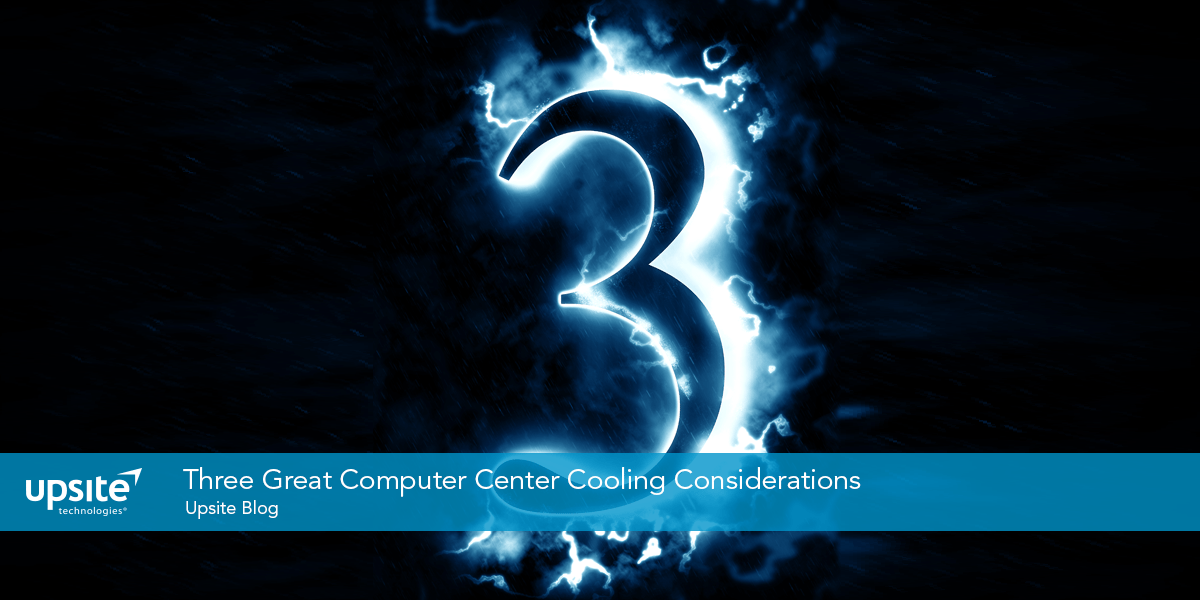Here’s to A Cooler 2018 – Three Great Computer Center Cooling Considerations9 min read

Believe it or not – we’re already halfway through 2017 and organizations are actively looking into their future budgets and projects. The data center continues to grow in complexity and importance. We now see increased workloads and applications being deployed as utilizing data center resources. But let’s pause for a moment and look to the future. New technologies are going to directly impact data center performance, capabilities, and delivery strategies. Cloud, mobility, and wearable technologies all translate to more data and users accessing the modern data center.
The latest Cisco Global Cloud Index report shows just how quickly data center and cloud utilization is growing.
- Global cloud IP traffic will almost quadruple (3.7-fold) over the next 5 years. Overall, cloud IP traffic will grow at a CAGR of 30 percent from 2015 to 2020.
- Driven by the Internet of Things, the total amount of data created (and not necessarily stored) by any device will reach 600 ZB per year by 2020, up from 145 ZB per year in 2015. Data created is two orders of magnitude higher than data stored.
- Hyper-scale data centers will grow from 259 in number at the end of 2015 to 485 by 2020. They will represent 47 percent of all installed data center servers by 2020.
- Global cloud IP traffic will account for more than 92 percent of total data center traffic by 2020.
All of this translates to higher-density systems, more power requirements, and the need for better cooling solutions. With all this in mind – let’s look at five ways you can have a cooler 2018.
Cooling becomes a science.
Many organizations are taking a more scientific approach to cooling. The goal is to understand the science and techniques of effective data center cooling management. This includes the ability to quantify the changes necessary, to identify the appropriate best practice, and to implement the airflow management strategy in the computer room. By approaching next-generation cooling solutions as a science, organizations can identify isolated airflow issues negatively affecting IT reliability, increase cooling capacity to allow for installation of more IT equipment, and learn how to defer capital expenditures on computer center cooling equipment. The point is to understand that cooling can be a fluctuating point within the data center. That’s why it’s important to stay agile and adapt the needs of the business, the market, and the overall data center ecosystem.
Dynamic computer center cooling optimization.
New computational fluid dynamics (CFD) cooling solutions provide administrators with a spectrum of technology to precisely match the cooling output to heat load in a data center. With CFD and intelligent controls – you can now transform a monitoring infrastructure from a few discrete sensors to a cloud instrumentation environment that can help monitor every inch of white space. The exciting part is the integration. These dynamic and proactive management solutions allow you to integrate with a powerful DCIM solution. From there, your management options increase enormously. Now, you can walk up to your IT rack, open the door, and instantly take an inventory and operating status of all the servers contained within—all from your desktop or hand-held device.
Next-gen DCIM.
Data center management and visibility are more important than ever. We’re now integrating cloud, virtualization and entire infrastructure components. We’re not just monitoring the environmental variables – we’re looking more closely at workloads, user access, and data. All of this translates to a new kind of DCIM solution. As mentioned earlier, integrating with dynamic cooling optimization technologies gives you the chance to catch issues before they become serious problems. Furthermore, you can create policies that allow you to dynamically provision and de-provision a number of different resources going into the rack and the data center. Finally, DCIM allows you greater control of a truly distributed data center model. We’re now building a management solution without any walls that is capable of integrating with on-premise and cloud solutions.
Remember, we’re not simply creating better computer center cooling; we’re creating smarter cooling. It’s important to know that your data center will continue to change and evolve. A great way to keep everything running optimally is through a powerful environmental control methodology. A lot of that falls into new DCIM functionality that allows you greater visibility into all aspects of your data center. From there, you’re able to make proactive decisions and plan for growth accordingly. Cooling considerations like dynamic cooling optimization allow data center managers to use more effective, next generation analysis and planning tools to dynamically manage their cooling infrastructure and optimize performance and reliability. To create a cooler 2018, you’ll need to start with a smarter cooling solution.








0 Comments